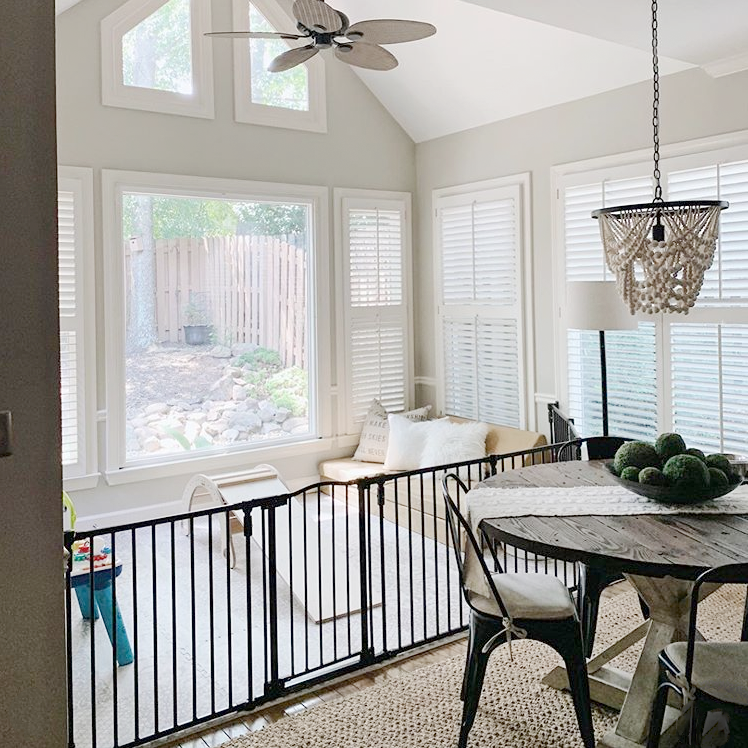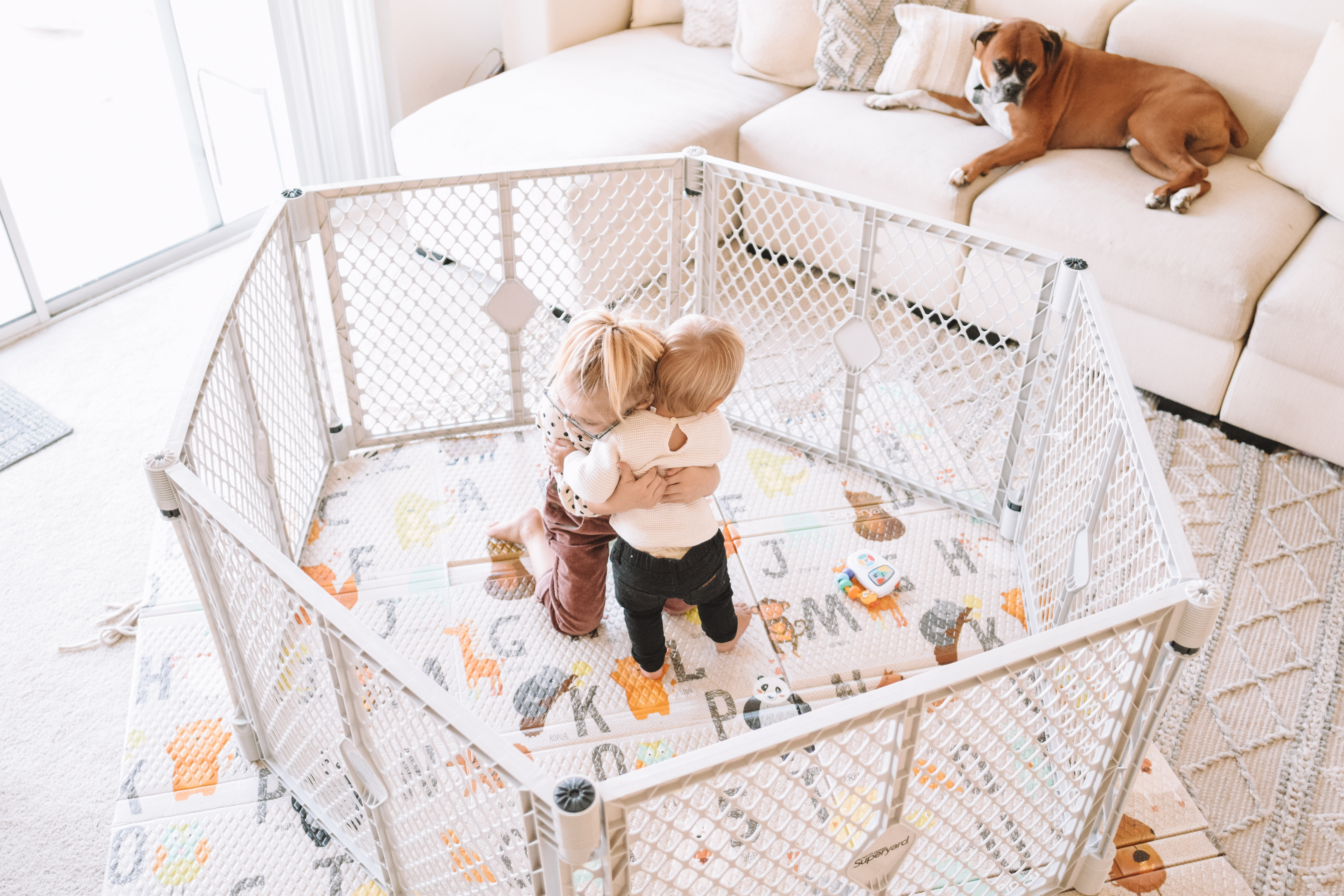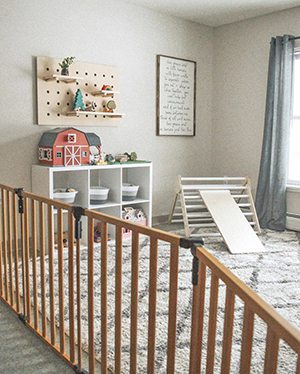How to Create the Perfect Playroom for your Toddler
Nov 24th 2020
Playrooms can be an amazing way to give your toddlers their own space. Plus, they can help prevent your entire home from turning into a toy tornado! Whether your home has tons of extra room or you live in a small apartment, we have tips on how to maximize a playroom for functionality, organization, and space. Read on to optimize your home for an amazing play room.

Photo Credit: Aliesha Porto
1. Pick a Location
The first step in creating a playroom or play space for your toddler is deciding where it’s going to go. Depending on your home, this could either be a no-brainer or a big challenge! For a toddler, we recommend a space that can be closed off and that is near the adult living space so you can keep an eye on your little one. Here are some ideas if you’re stuck:
- Separate Room: If you’re lucky enough to have a spare room in your home that you can dedicate as a play room, use it! It will be great to have a separate space just for kids.
- Convert Another Room: Many parents are forgoing their formal dining space and using it as a playroom. This might be a super functional choice if your kiddos need space and you only use your dining room a few times a year. Or maybe you have a home office or a formal living room that are only used sparingly. Think about where your family can use the space the most!
- Combine Rooms: There might be an area in your home that has some extra wiggle room to fit a play space for your kiddo. It’s all about where you spend the most time. If you have a home office, set up a play space there so your little one can play while you work from home. If you need to keep an eye on your little ones while you’re cooking dinner, set up a space near the kitchen.
- Living Room: If the living room is the only space you have or if it’s just the most convenient, use it! Giving your living room a dual purpose will allow your family to spend tons of time together in the same space.

2. Define Play Space with Playmat, Baby Gate, or Play Yard
Once you decide where your play space is going to be, next you will decide how to make it separate from the rest of your home and how to make it safe for your little one. Separation will help contain the inevitable mess your exploring toddlers are going to create, and it’s also good for little ones to feel ownership over a space in the home. Baby gates and play yards are great ways to designate your play space while keeping your little one safe and sound. Make sure to select the proper gate for your space or opening to maximize safety. Check out our Gates 101 page for more information. It’s also useful to designate your play space with a rug or playmat, especially if your kiddos are too big for a baby gate. You can also use a playmat to delineate separate areas of your playroom, such as a reading corner or a play area.

Photo Credit: Jenn Hallak
3. Declutter and Start a Toy Rotation
It can be easy for toys to start piling up in your home, and before you know it, you have more toys than you know what to do with! Having too many toys can be overwhelming for kids too, and it can actually cause overstimulation and boredom. The key to keeping your little ones engaged and excited about their toys is to start a toy rotation. Toy rotations have huge benefits for kids—it will help them have a stronger imagination, a better attention span, and more independence when they aren’t overwhelmed with too many toys every day. To start a toy rotation, lay out all of your kid’s toys. Start a donate pile for toys they no longer use and a garbage pile for toys that are broken and unusable. Then you can sort toys into different categories: learning toys, crafting supplies, building toys, musical toys, sports toys, and pretending toys. Choose a couple of toys from each category to keep in your play room, and put the rest into storage. At an interval that works for you, rotate the toys. This strategy will benefit parents and little ones alike—it will keep the play room less cluttered and will help your little one from being overstimulated. Learn more about toy rotation from Green Child Magazine.

4. Organize and Decorate
The next step is to organize and decorate your play room. Organization is the most important step to making sure your play room is functional, that your kiddos actually play with their toys, and that cleanup is a breeze. Make sure that every toy has a home, so that you and your toddler know where everything goes once it’s time to clean up. Open shelving units with baskets are an ideal organization solution, and they will allow your little one easy access to their toys while also making it easy to pick up when they’re done. Keep shelves and toys at eye level to your little ones so they can see all their options. Parents can even use picture labels on each drawer or shelf so that kiddos know where each toy belongs.

Photo Credit: Christina Miller
5. Double Check for Safety
The last step in setting up your perfect play room is to double check that everything is super safe for your little one. Anchor furniture to the wall, cover outlets, make sure curtain pulls are out of reach, lock windows, and any other safety precautions. The best way to see what childproofing needs to be done is to get down on your child’s level (yep, on your hands and knees!) and see what dangers they could get into. For more info on this, check out our Nursery Safety Tips blog post and our childproofing products.
